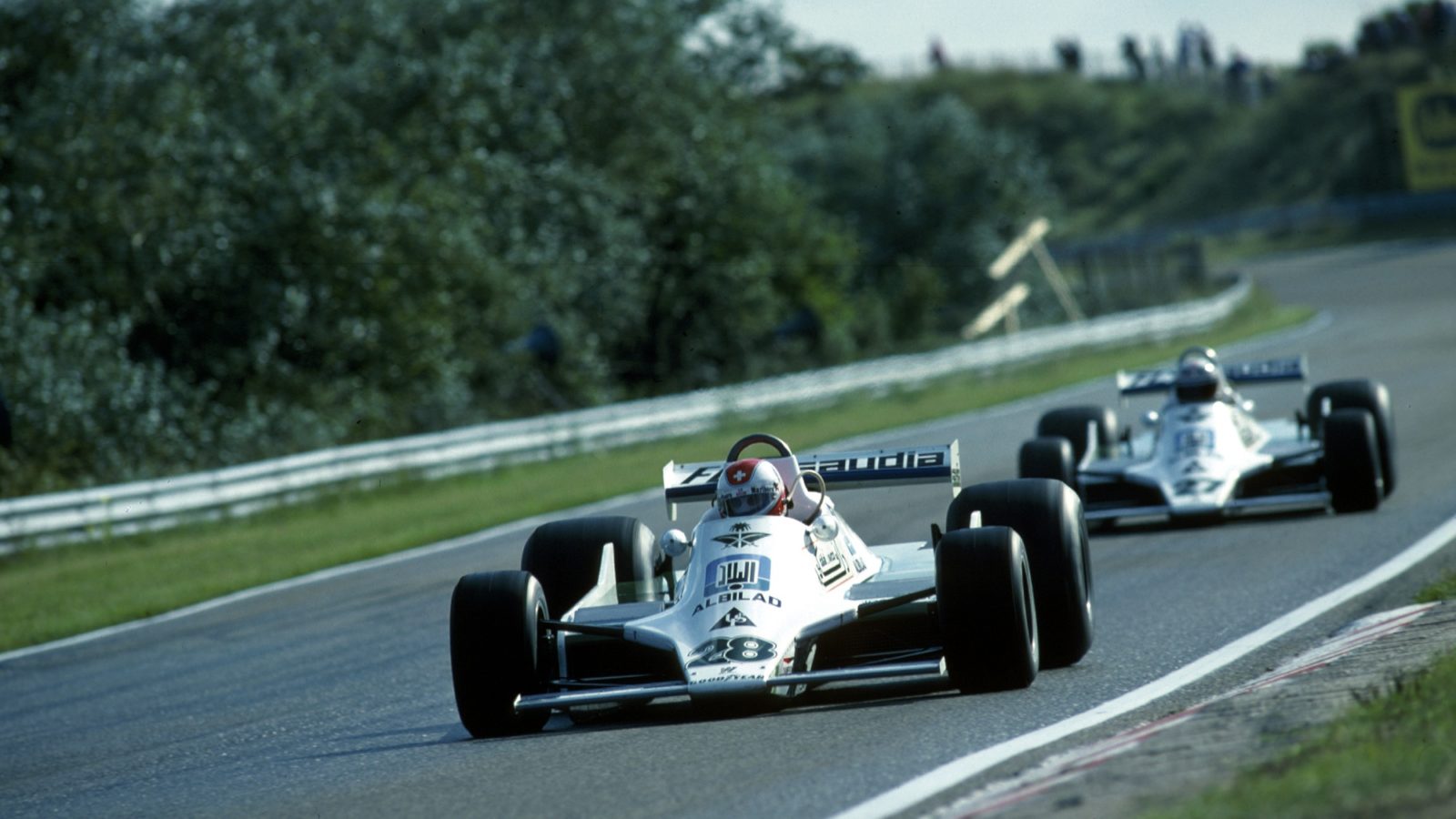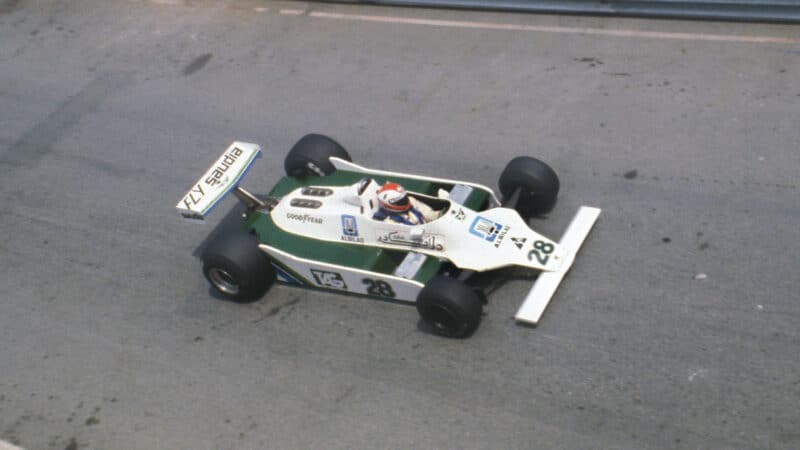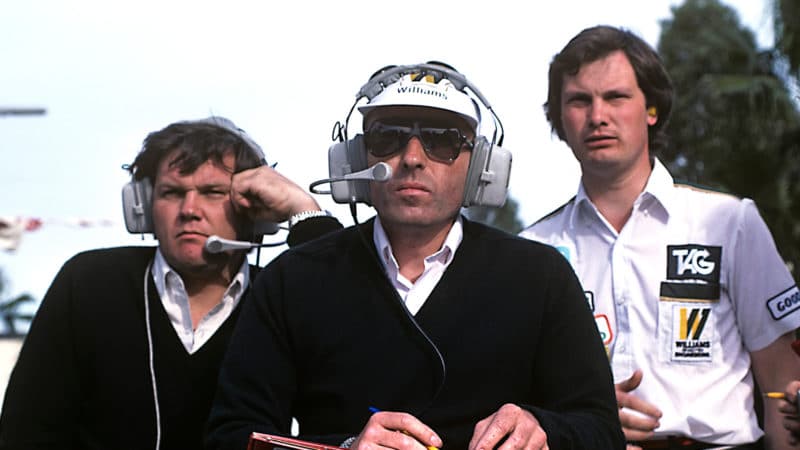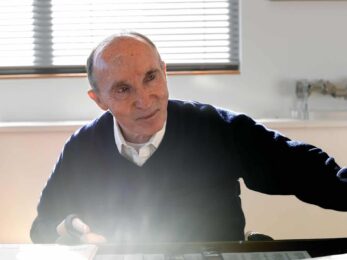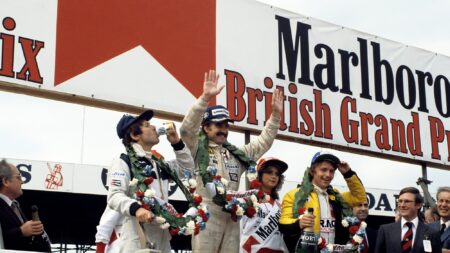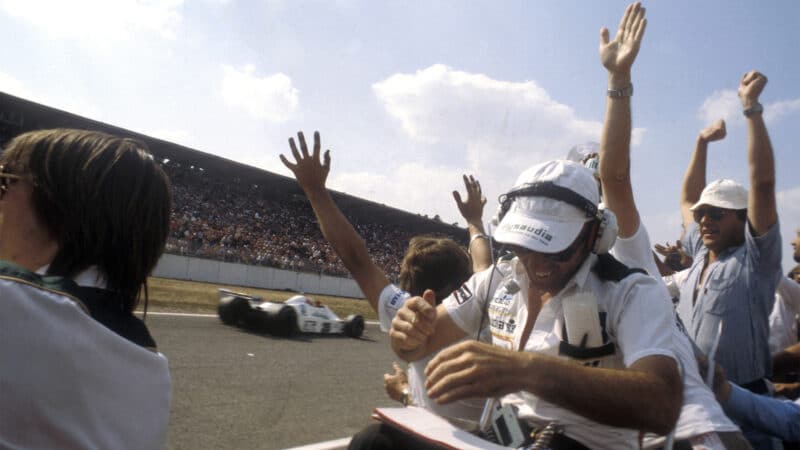Reading the pressure-tapping read-outs, Frank recalls: “It became clear that airflow beneath the underbody shape we’d been running was just stalled from the back of the chassis rearwards, around the engine and gearbox. It wasn’t generating any downforce. I’d been in the tunnel trying different underbody shapes – cut with scissors from 12-thou-thick S1C aluminium. We’d do a run, then check the pressure-change figures – and then here was a progressively up-curved and expanding shape which showed a massive gain – not just an improvement, but a truly massive gain!
“I went straight to the works, drew the new shape and we made an undertray fairing in NS4 standard high-strength aluminium that you could bend without it breaking, to fit around the bottom of the engine. From those quarter-scale test results I confidently expected a shedload more downforce, and we rushed the parts to Silverstone just in time for British Grand Prix practice, ’79.”
Frank Williams once outlined that momentous weekend to me like this: “The Renaults won their first Grand Prix, on home soil at Dijon, split by Villeneuve’s Ferrari – and all on French Michelin tyres. Alan had come fourth there, the first Goodyear runner, and Clay (Regazzoni) sixth, unable to do anything about those giant teams up front.
“I thought this was possibly the start of a new age. The industrial giants like Renault, Alfa Romeo and Fiat – operating through Ferrari – with their vast engineering resources, would just kill the established specialist teams like ourselves… But then we went testing at Silverstone, and it really came home to me just how good Patrick’s ’07 was becoming…
“I could not believe my watch. Alan went out and on his second lap did a 14.6, then 14.0, 13.6. 13.2. When he got down to 13.6 I thought ‘This can’t be right, I’d better check these watches’, but there was no mistake, and with the underfairing he was suddenly down to 12.6! Although we didn’t realise it immediately, the improvement was helped by a very strong engine, but by the end of the day Alan was slamming in 12.6s and 12.8s as he liked – against an existing record of 1:18! – and blowing everybody’s mind.”
In qualifying, Alan finally clocked a shattering 1:11.8, averaging 145.55mph for the near 3-mile lap. Both Alan Jones and a Williams car were on pole position for the first time in their respective careers, and Clay Regazzoni in the sister FW07 qualified fourth- fastest, behind Jean-Pierre Jabouille’s Renault and Nelson Piquet’s Brabham.
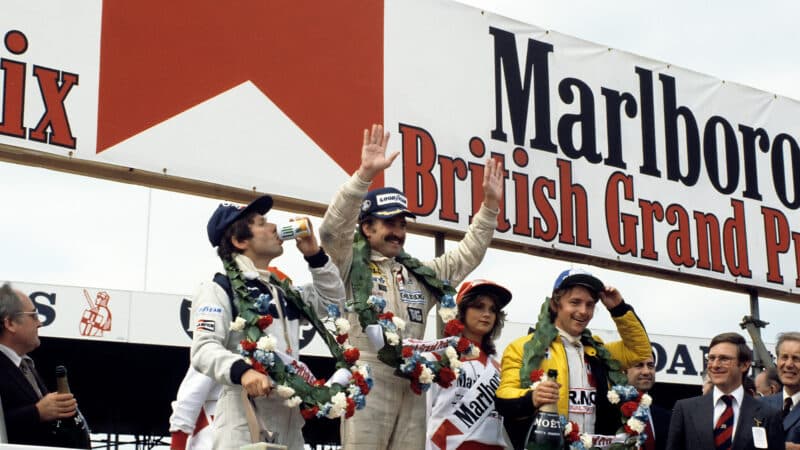
A final championship GP win for Regazzoni; a first for Williams
Bernard Cahier/Getty Images
The Williams FW07 twins then ran first and third early in that race, split by a sweating Jabouille’s Renault until its tyres degraded and on lap 17 he headed for the pits. For 22 more laps Jones and Regazzoni streaked around 1-2, but suddenly it was the rugged Australian’s turn to dive into the pit lane – for the neck of his Cosworth engine’s water pump had cracked, dribbling the coolant away.
Clay Regazzoni – veteran, hard-bitten, popular Clay – blared around untouchable, lap after lap, to win the British Grand Prix. Only days previously Renault had scored its first Grande Epreuve victory, on home soil; now the Williams team emulated that success.
